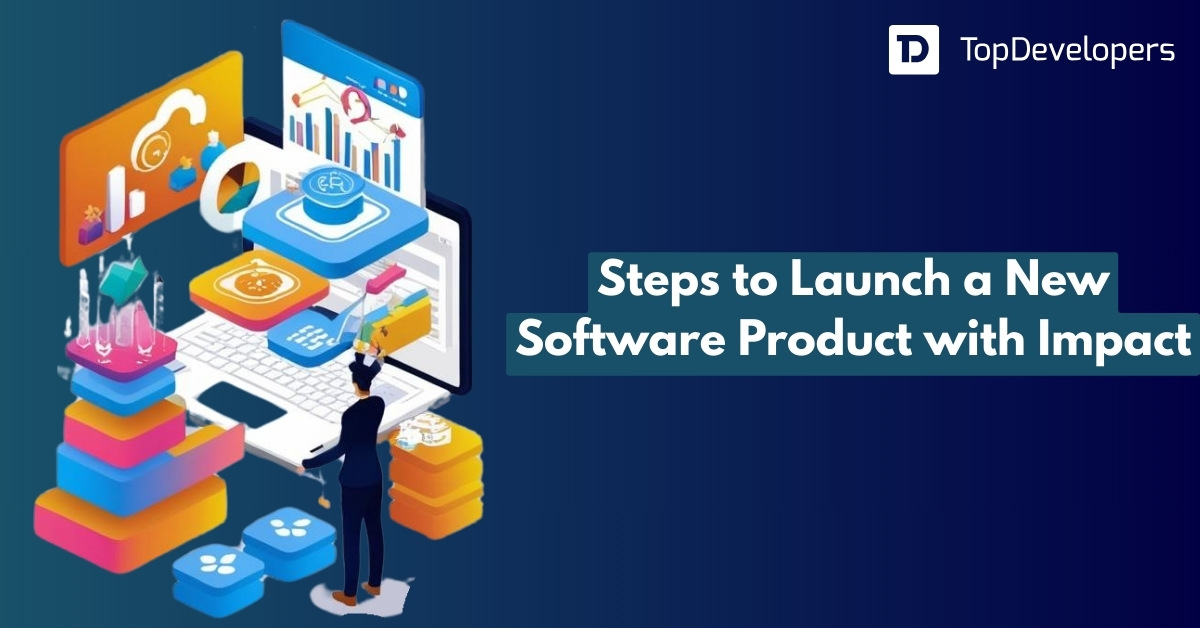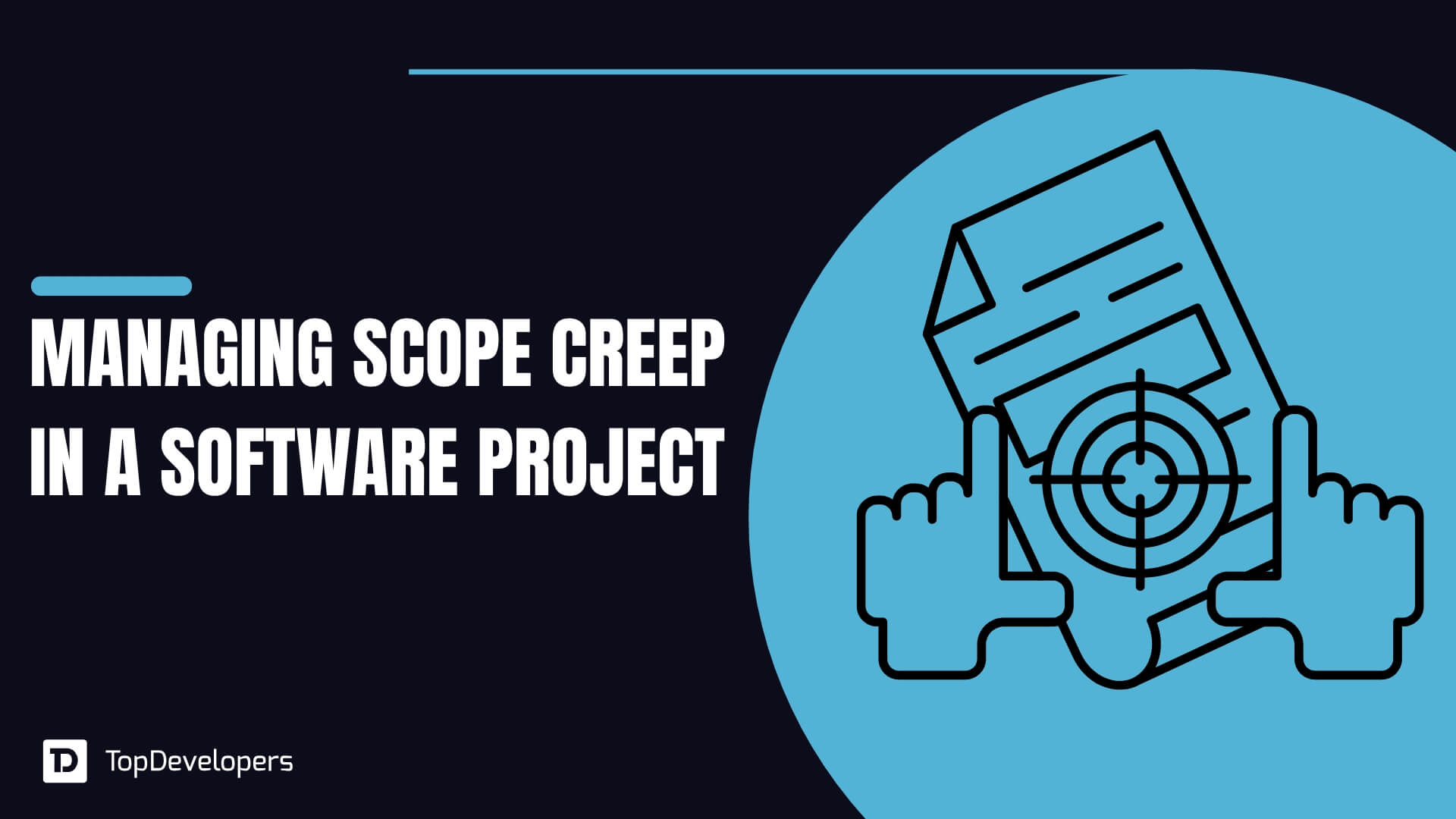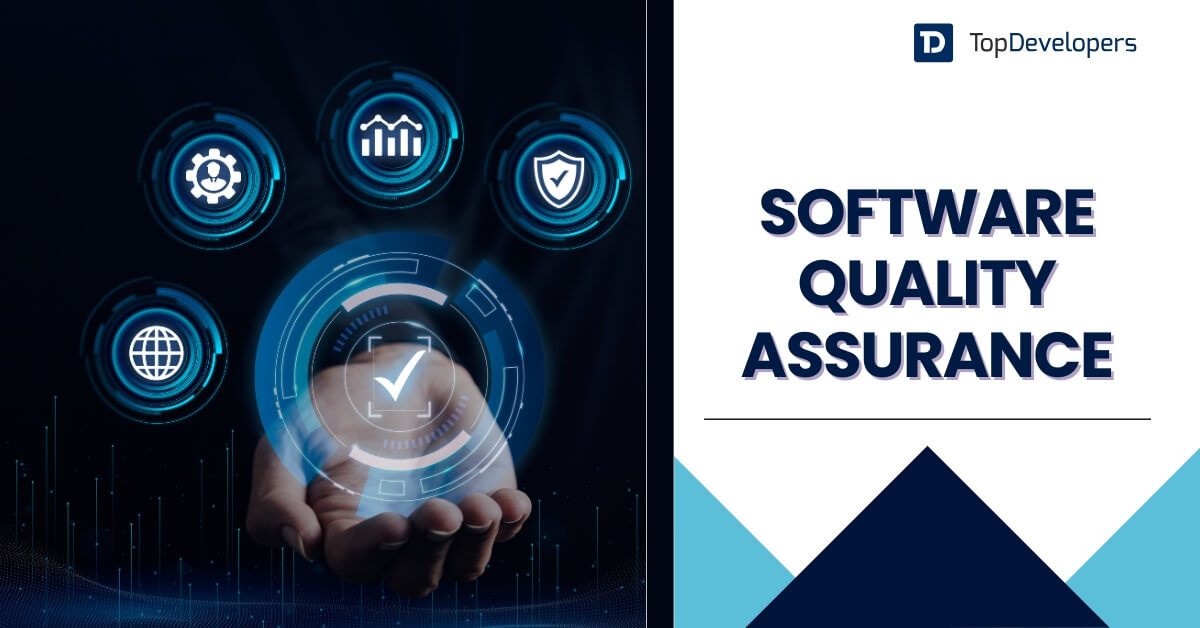
Technical documentation plays a critical role in software development by capturing detailed, organized, and accessible information about a project. It serves as a comprehensive guide for developers, testers, and stakeholders, outlining the design, maintenance, and functionality of a software system for ongoing and future use.
Many businesses recognize the importance of well-documented processes. Studies show that software projects with clear documentation are 50% more successful than those without structured documentation. This is because detailed documentation helps reduce development errors, improve onboarding efficiency, and enhance collaboration across teams.
Software development documentation is more than just a reference resource guide. It enhances communication among teams, reduces misinterpretations, and ensures that both technical and non-technical users can effectively engage with the software. Businesses that prioritize technical documentation streamline project execution, simplify troubleshooting, and build scalable software solutions.
By investing in comprehensive technical documentation, businesses create a single trusted source that ensures the software development process is efficient, maintainable, and aligned with long-term goals.
Table of Contents
- The Importance of Technical Documentation in Software Development
- Types of Technical Documentation in Software Development
- How to Write Technical Documentation for Software Development?
- Understand the Audience and Their Requirements
- Define the Scope and Purpose of Documentation
- Follow a Structured Format for Documentation
- Leverage Visuals and Examples for Clarity
- Write Documentation Drafts Before Finalizing Content
- Outline Technical Documentation Before Writing
- Focus on Final Editing and Proofreading
- Make the Document Available Across Teams
- Use a Content Management System for Documentation
- Review and Update Documentation Regularly
- Best Practices for Writing Technical Documentation in Software Development
- Tools and Platforms for Technical Documentation in Software Development
- DocBook for Structured Technical Documentation
- HelpSmith for Comprehensive Help Manuals
- Docs as Code for Version-Controlled Documentation
- Confluence for Collaborative Documentation
- SimpleMDE for Markdown-Based Documentation
- KnowledgeOwl for Knowledge Base Management
- Document360 for AI-Powered Documentation
- ClickHelp for Cloud-Based Technical Documentation
- BitAI for Real-Time Documentation Collaboration
- ProProfs for Creating Interactive Help Content
- Conclusion: The Role of Technical Documentation in Software Development
The Importance of Technical Documentation in Software Development
Technical documentation is an important part of software development, ensuring that every aspect of a project is well-documented, accessible, and structured for future reference. Technical documentation provides software development teams with a clear roadmap for building, maintaining, and scaling software solutions. Without proper technical documentation, businesses face inefficiencies, knowledge gaps, and increased project risks.
Ensuring Clear Communication Among Software Development Teams
Software development involves multiple teams and stakeholders, including software developers, quality assurance professionals, system administrators, and business analysts. Without structured technical documentation, miscommunication can lead to project delays, inconsistent implementations, and unnecessary rework.
Comprehensive technical documentation ensures that all the software development team members are aligned with technical specifications, system architecture, and business objectives. By maintaining a well-documented software development process, businesses can minimize misunderstandings, reduce redundant efforts, and improve overall team efficiency.
Importance of Communication in Software Development Outsourcing
Accelerating Software Developer Onboarding and Reducing Training Time
When new developers join a software development project, they need to understand code structures, workflows, and system dependencies. Without proper technical documentation, onboarding becomes time-consuming, requiring constant clarification from senior team members.
Well-structured technical documentation provides clear explanations of software architecture, coding standards, and system integration, enabling new team members to ramp up quickly and contribute effectively. This reduces dependency on verbal knowledge transfer, allowing software teams to focus on development procedure.
Enhancing Software Maintainability and Future Scalability
Software systems need ongoing maintenance, updates, and optimizations to keep up with business needs and technological advancements. Without technical documentation, businesses face challenges in managing system upgrades, bug fixes, and performance enhancements.
Proper software development technical specifications ensures that future teams can quickly understand system dependencies, architectural decisions, and integration points. This enables businesses to scale their software efficiently, minimize disruptions, and maintain long-term system reliability.
Improving Software Development Efficiency and Reducing Errors
Errors in software development often result from miscommunication, misconfiguration, or incorrect implementation. Without technical documentation, software development teams may struggle with inconsistent coding practices, unclear API usage, and inefficient troubleshooting.
By maintaining detailed and structured code documentation, businesses ensure that software developers, quality assurance professionals, and support teams have access to reliable reference materials. This improves coding accuracy, reduces debugging time, and enhances overall product quality.
Types of Technical Documentation in Software Development
Software development involves various technical documents tailored for software developers, software testers, and end-users. These different type of technical documents streamline collaboration, ensure clarity, and support software maintenance. From API references to user manuals, each type serves a distinct purpose in the development lifecycle. Below are the key categories of technical documentation used in software projects.
Product Documentation for Software Development
Product documentation focuses on the features, functionality, and usage of a software product. It helps both developers and end-users understand how the software operates and how it should be used.
- User Guides: Provide step-by-step instructions for using the software, including interface navigation, feature usage, and troubleshooting common issues.
- Installation Manuals: Outline the installation process, system requirements, and configuration steps for deploying the software in different environments.
- API Documentation: Offers a structured guide for software developers on how to integrate, interact with, and extend the software using its APIs.
- End-User Documentation: Explains how non-technical users can operate the software, ensuring ease of adoption and usability.
Process Documentation in Software Development
Process documentation details the workflows, methodologies, and standards followed during software development. It ensures consistency and clarity across teams.
- Development Plans: Define milestones, feature roadmaps, and project timelines for structured software development.
- Test Schedules: Detail the software testing phases, quality assurance procedures, and validation criteria for ensuring software reliability.
- Maintenance Logs: Track system updates, bug fixes, and version changes, helping teams monitor progress and manage deployments efficiently.
- Quality Assurance Documentation: Covers software testing methodologies, bug-tracking processes, and compliance standards to maintain software performance and security.
System Documentation for Software Development
System documentation provides technical insights into the software architecture, data structures, and internal components. It helps developers and administrators understand system dependencies and interactions.
- Architecture Descriptions: Outline the software’s structure, modules, and interactions, ensuring that development teams follow standardized design principles.
- Database Schemas: Document the database architecture, table relationships, and data flow, allowing developers to optimize queries and manage storage efficiently.
- Source Code Documentation: Includes code comments, inline explanations, and version control notes to help developers maintain and modify code effectively.
- SysAdmin Documentation: Covers server configurations, network settings, and security protocols, ensuring system administrators can manage deployments, troubleshoot errors, and optimize system performance.
Requirements and Design Documentation in Software Development
Software requirements and design documentation outline functional specifications, technical constraints, and software design decisions. These documents helps developers and stakeholders throughout the project.
- Requirements Documentation: Defines functional and non-functional requirements, ensuring that software development aligns with business objectives and user expectations.
- Design Documentation: Provides wireframes, system modeling diagrams, and architectural blueprints, helping development teams follow a structured approach to software implementation.
How to Write Technical Documentation for Software Development?
Writing technical documentation for software development requires a structured and systematic approach to ensure clarity, accuracy, and usability. A well-documented software development process simplifies onboarding, troubleshooting, system maintenance, and future scalability. By following a step-by-step process, businesses can create documentation that enhances collaboration, knowledge sharing, and overall software development efficiency.
Understand the Audience and Their Requirements
Software technical documentation should be tailored to the needs of its users. Software developers, system administrators, quality assurance teams, and end-users all interact with software differently. Understanding the intended audience ensures that the documentation provides the right level of detail and uses appropriate language.
- Software developers require in-depth code explanations, system architecture overviews, and API documentation to ensure seamless integration and modification.
- System administrators need deployment procedures, configuration settings, and maintenance guidelines to manage infrastructure effectively.
- Quality assurance teams look for test plans, bug reporting protocols, and validation criteria to streamline the software testing process.
- End-users require user manuals, help guides, and troubleshooting instructions that explain software features in simple terms.
Clearly defining the target audience ensures that documentation remains relevant, accessible, and useful for its intended users.
Define the Scope and Purpose of Documentation
Before starting, it is essential to define the technical documentation’s scope and purpose. This ensures that the content is well-structured and focuses on essential aspects of software development. Aligning technical documentation with the Software Development Scope of Work helps ensure that all project requirements, system functionalities, and deliverables are clearly outlined.
- Identify the specific areas that need documentation, such as system architecture, API integrations, coding standards, or troubleshooting guides.
- Determine the purpose of each document and type, whether it is for internal reference, end-user support, onboarding, or regulatory compliance.
- Avoid unnecessary content that does not contribute to the core objective of the documentation.
Establishing a clear scope prevents technical documentation from becoming overly complex or difficult to navigate.
Follow a Structured Format for Documentation
A well-organized structure makes technical documentation easier to read, navigate, and update. Using a consistent format across all types of documentation ensures clarity and accessibility.
A standard structure for technical documentation in software development includes:
- Title and Overview: A brief introduction describing the document’s purpose.
- Table of Contents: A list of sections and topics covered in the documentation for easy navigation.
- Step-by-Step Instructions: Clear and concise descriptions of processes, configurations, or procedures.
- Code Samples (If Applicable): Snippets that demonstrate implementation, API calls, or command-line usage.
- FAQs and Troubleshooting Guides: Solutions to common errors or frequently asked questions.
- References and Appendices: Links to additional resources, definitions, and supporting documentation.
Using headings, bullet points, numbered lists, and indentation improves readability and helps users quickly find relevant information in technical documentation of software development.
Leverage Visuals and Examples for Clarity
Text-based technical documentation can sometimes be difficult to interpret, especially for complex concepts. Incorporating visual aids enhances understanding and makes documentation more user-friendly.
- Flowcharts and Diagrams: Illustrate system architecture, API interactions, and data flow in an easy-to-understand format.
- Annotated Screenshots: Highlight specific UI elements, configuration settings, and troubleshooting steps for software interfaces.
- Code Snippets: Provide real-world examples of how a feature or function is implemented in the software.
- Tables and Charts: Compare features, performance metrics, or system requirements effectively.
Well-placed visuals improve engagement and make technical documentation more interactive and digestible.
Write Documentation Drafts Before Finalizing Content
Creating a first draft allows businesses to refine and improve technical documentation before finalizing it. The drafting process helps to:
- Identify gaps in information and fill in missing details.
- Ensure that explanations are clear, logical, and aligned with the software’s functionality.
- Allow multiple team members to review and provide feedback.
Technical documentation should undergo multiple revisions before being considered complete. Gathering input from developers, quality assurance teams, and business stakeholders ensures that documentation is comprehensive, accurate, and practical.
Outline Technical Documentation Before Writing
A clear outline serves as a blueprint for structuring technical documentation effectively. Outlining helps in:
- Organizing sections and subsections in a logical order.
- Ensuring that all critical topics are covered without unnecessary information.
- Reducing the likelihood of duplicating content or missing important details.
Planning to draft technical documentation with an outline also speeds up the writing process and improves the consistency of information.
Focus on Final Editing and Proofreading
Once technical documentation is drafted, thorough editing and proofreading ensure accuracy, clarity, and professionalism.
- Check for Consistency: Ensure uniform formatting, terminology, and sentence structures across all sections.
- Eliminate Redundant Information: Remove unnecessary repetition to keep documentation concise.
- Verify Technical Accuracy: Ensure that code snippets, system instructions, and references are correct and up to date.
- Improve Readability: Adjust sentence structure, simplify complex explanations, and avoid excessive jargon.
Editing and proofreading improve the quality and credibility of software development technical documentation.
Make the Document Available Across Teams
Technical documentation in software development should be readily accessible to all relevant teams. Using a centralized storage solution ensures that documentation is always available and easy to retrieve.
- Store documentation in a shared knowledge base, internal wiki, or cloud-based documentation platform. Along with development plans, system documentation, and process guidelines, businesses should also store the software development agreement in the same repository. This ensures that teams can easily reference contractual obligations, compliance requirements, and project deliverables alongside technical materials.
- Ensure that role-based access permissions are in place to control editing rights. Keep documentation well-organized and categorized for easy navigation.
- Keep documentation well-organized and categorized for easy navigation.
By making technical documentation widely available, businesses can improve collaboration, reduce dependencies on verbal instructions, and ensure that critical information, including the Agreement such as Software Development NDA, is always accessible to development and management teams.
Use a Content Management System for Documentation
A content management system helps in storing, updating, and managing technical documentation efficiently. It allows for:
- Version Control: Tracks changes and updates made to the documentation.
- Search Functionality: Enables quick access to relevant sections.
- Collaboration Features: Allows multiple team members to contribute and review content.
Using a technical documentation platform ensures that businesses maintain structured, easily retrievable, and well-organized technical documentation.
Review and Update Documentation Regularly
Software development is a continuous process, and technical documentation must evolve with it. Outdated documentation leads to confusion and inefficiencies. To ensure relevance:
- Schedule regular documentation reviews to update changes in software features, system dependencies, and user workflows.
- Maintain a version history so previous documentation can be accessed if needed.
- Encourage feedback from developers, testers, and end-users to identify improvement areas.
Keeping documentation up to date ensures that businesses maintain high-quality, accurate, and useful software documentation.
Best Practices for Writing Technical Documentation in Software Development
Effective technical documentation in software development requires more than just compiling information. It must be structured, clear, and easily accessible for developers, testers, and other stakeholders. By following best practices for technical documentation, businesses can create documents that improves collaboration, enhances software quality, and streamlines software development processes.
Maintain Clarity and Conciseness
Technical documentation for software development procedure should be written in a clear and concise manner. Avoiding overly complex sentences and unnecessary technical jargon ensures that readers can quickly understand the content. Each section should focus on delivering precise and actionable information without excessive detail or redundancy. Using simple and direct language improves readability and comprehension.
Use a Structured Organization for Easy Navigation
Organizing technical documentation into logical sections makes it easier for users to find relevant information. Using headings, subheadings, and bullet points ensures that content is well-structured and visually accessible. Including a table of contents, an index, and internal linking allows for quick navigation. A structured format ensures that dedicated software development teams can locate key details efficiently without searching through disorganized information.
Incorporate Visual Aids for Better Understanding
Visual elements such as flowcharts, system diagrams, screenshots, and annotated images enhance understanding. In software development, technical documentation often includes explanations of complex architectures, system dependencies, and integration processes. Providing visuals alongside text helps in simplifying explanations, making it easier for readers to grasp technical concepts.
Keep Documentation Updated with Software Changes
Software development is an evolving process, with frequent updates, patches, and system modifications. Technical documentation should be regularly reviewed and updated to reflect these changes. Outdated documentation leads to confusion and inefficiencies, making it essential for businesses to maintain an updated schedule. Ensuring that documentation evolves alongside software development prevents inconsistencies and maintains its relevance.
Gather Feedback from Development Teams and Users
Technical documentation should be reviewed by both software developers and end-users. Software developers can validate the accuracy of technical content, while users can provide feedback on clarity and usability. Encouraging input from different perspectives ensures that documentation is useful and meets the needs of all stakeholders. Regular feedback loops help in refining content, improving structure and eliminating gaps in information.
Ensure Documentation is Accessible to Relevant Teams
Technical documentation for software solution development should be easily accessible across software development teams. Storing documentation in a centralized repository or a documentation management system ensures that all stakeholders can access the latest version when needed. Providing role-based access, search functionality, and categorization improves efficiency and reduces time spent searching for critical information.
Tools and Platforms for Technical Documentation in Software Development
Using the right tools and platforms for technical documentation in software development helps businesses create, manage, and update documentation efficiently. These tools improve collaboration, maintain consistency, and ensure that documentation is accessible to all relevant teams. Selecting a documentation platform that aligns with business needs can enhance the overall process of the software development lifecycle.
DocBook for Structured Technical Documentation
DocBook is a markup language designed for writing structured documentation. It allows businesses to create technical documentation in a well-organized format that can be published in multiple formats, including HTML, PDF, and EPUB. Its structured approach ensures that complex software documentation remains consistent and standardized.
HelpSmith for Comprehensive Help Manuals
HelpSmith is a software documentation tool that enables businesses to create help manuals, knowledge bases, and instructional guides. It supports multiple formats, making it a versatile choice for software development teams that need to document product features, installation processes, and troubleshooting guidelines.
Docs as Code for Version-Controlled Documentation
Docs as Code is an approach where technical documentation is managed using version control systems, similar to software development workflows. This method ensures that documentation updates follow the same structured processes as code development, making it easier to track changes, collaborate, and maintain consistency across teams.
Confluence for Collaborative Documentation
Confluence is a widely used platform for the technical documentation that allows software development teams to create, share, and manage documentation in a collaborative environment. It supports real-time editing, version tracking, and team discussions, making it ideal for businesses that require centralized and interactive documentation.
SimpleMDE for Markdown-Based Documentation
SimpleMDE is a lightweight Markdown editor that simplifies the process of writing and formatting technical documentation. It is useful for businesses that require a simple and flexible solution for creating structured technical documentation without the need for complex tools.
KnowledgeOwl for Knowledge Base Management
KnowledgeOwl is a documentation management platform designed for businesses that need to create user-friendly knowledge bases. It helps organize technical content, making it easy for both internal teams and external users to access relevant information.
Document360 for AI-Powered Documentation
Document360 is an AI-driven documentation tool that enables businesses to create, manage, and publish structured content efficiently. It supports knowledge base creation, version control, and collaboration, making it suitable for software development teams looking for automation features in their technical documentation processes.
ClickHelp for Cloud-Based Technical Documentation
ClickHelp is a cloud-based documentation tool that provides a centralized platform for managing software development documentation. It offers real-time collaboration, content reuse, and multi-language support, making it ideal for businesses with distributed development teams.
BitAI for Real-Time Documentation Collaboration
BitAI is a documentation platform that supports real-time collaboration among software development teams. It allows multiple users to work on the same document simultaneously, ensuring that technical documentation remains updated and aligned with development progress.
ProProfs for Creating Interactive Help Content
ProProfs is a documentation tool that helps businesses create interactive help manuals, FAQs, and technical guides. It supports multimedia integration, enabling businesses to enhance technical documentation for software development process with videos, images, and step-by-step instructions.
Conclusion: The Role of Technical Documentation in Software Development
Technical documentation plays a fundamental role in ensuring efficiency, collaboration, and long-term success in software development. It provides software development teams with structured insights into system architecture, coding standards, and process workflows. Without well-maintained technical documentation, businesses risk inefficiencies, miscommunication, and challenges in scaling their software solutions.
For businesses investing in software development, clear and structured documentation is essential for maintaining project consistency, reducing development errors, and supporting future updates. It enables seamless onboarding of new software development team members, improves cross-functional collaboration, and ensures that software remains adaptable to evolving business needs.
Top software development companies prioritize technical documentation as a critical aspect of their software development process. By implementing structured technical documentation strategies, businesses can enhance product quality, streamline maintenance, and improve overall software development efficiency.
A well-documented software system is a long-term asset that supports business growth, facilitates compliance, and ensures that all stakeholders have access to accurate and up-to-date information. Businesses that focus on technical documentation create a more sustainable and scalable approach to software development, ensuring long-term success in a competitive digital landscape.
 Avantika Shergil
| Feb 26, 2025
Avantika Shergil
| Feb 26, 2025
Avantika Shergil is a technology enthusiast and thought leader with deep expertise in software development and web technologies. With over 8 years of experience analyzing and evaluating cutting-edge digital solutions, Avantika has a knack for demystifying complex tech trends. Her insights into modern programming frameworks, system architecture, and web innovation have empowered businesses to make informed decisions in the ever-evolving tech landscape. Avantika is passionate about bridging the gap between technology and business strategy, helping businesses build customized software and website, and understand about different tools to leverage effectively for their ventures. Explore her work for a unique perspective on the future of digital innovation.





